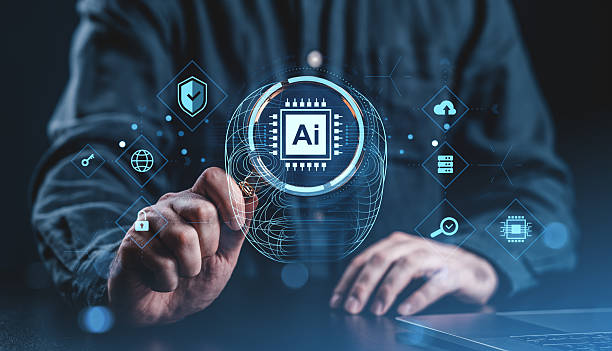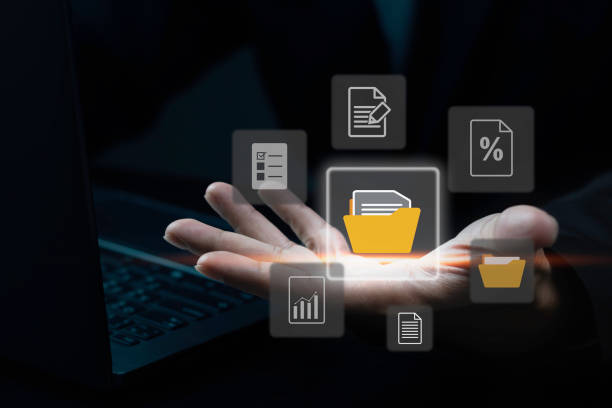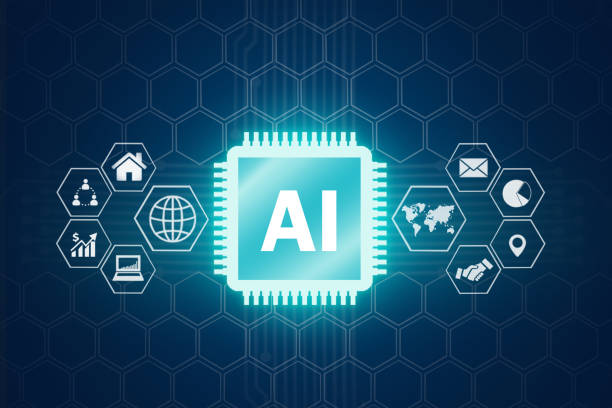What is On-Page SEO and Why Does It Matter?
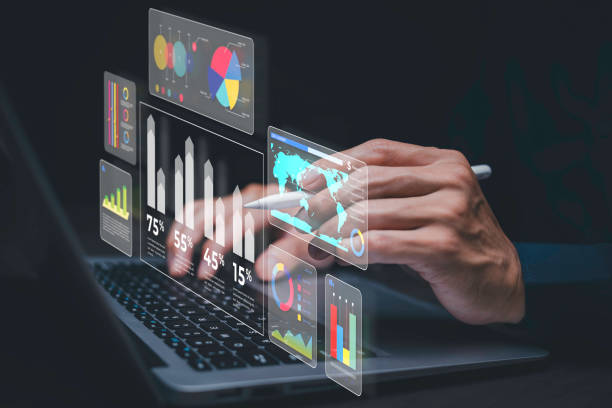
What is On-Page SEO and Why Does It Matter?
On-Page SEO refers to a set of techniques and actions performed within your website to increase your site’s ranking in search engine results like Google.
These actions include optimizing content, site structure, HTML tags, and other elements found on web pages.
The importance of on-page SEO stems from the fact that search engines use these elements to understand the subject and content of web pages.
The better your site’s internal #optimization, the better search engines can understand your content and show it to users looking for relevant information.
This means increased organic traffic, which in turn increases potential visitors and customers.
On-Page SEO (On-Page SEO) not only helps search engines better understand your content but also improves user experience.
A website with a proper structure, relevant and practical content, and fast loading speed, keeps users on your site longer and increases the likelihood of their return.
These factors, in turn, positively affect your site’s ranking in search engines.
Therefore, on-page SEO is one of the most important aspects of SEO that should not be overlooked.
Tired of your online store not generating as much revenue as it potentially could? Rasaweb, a specialist in designing professional online stores, solves this problem once and for all!
✅ Increased sales rate and revenue
✅ High loading speed and unparalleled user experience
⚡ Get free consultation on online store design
Keyword Research; The Cornerstone of On-Page SEO

Keyword Research; The Cornerstone of On-Page SEO
Keyword research is the first and most important step in the on-page SEO process.
Keywords are the terms users enter into search engines to find the information they need.
Choosing the right keywords helps you optimize your content based on users’ needs and demands.
To start keyword research, you should first compile a list of topics related to your business.
Then, use keyword research tools like Google Keyword Planner, SEMrush, or Ahrefs to find keywords related to each topic.
When choosing keywords, consider search volume, competition, and the keyword’s relevance to your content.
Keywords with high search volume can attract a lot of traffic to your site, but competition for ranking in these keywords is also higher.
Keywords with lower search volume usually have less competition and can attract more targeted traffic to your site.
Also, make sure that your chosen keywords are relevant to your site’s content and answer users’ questions and needs.
Using appropriate keywords in the title, meta description, URL, and content of web pages helps search engines better understand the topic of your pages.
Optimizing Page Title (Title Tag) and Meta Description

Optimizing Page Title (Title Tag) and Meta Description
The page title (Title Tag) and meta description (Meta Description) are two important elements in on-page SEO (on-page SEO) that are displayed in search engine results.
The page title is the main title of the web page that is displayed at the top of the browser and in the search results.
The meta description is a summary of the page’s content that is displayed below the page title in the search results.
These two elements help users and search engines to have a better understanding of the page’s content.
To optimize the page title, you should use the page’s main keyword at the beginning of the title.
The page title should be attractive, concise, and relevant to the page’s content.
The length of the page title should not exceed 60 characters, as it may be displayed incompletely in search results otherwise.
To optimize the meta description, you should provide an attractive and informative summary of the page’s content.
The meta description should encourage users to click on your site’s link.
The length of the meta description should not exceed 160 characters.
Using relevant keywords in the meta description can also help improve your site’s ranking.
Following these tips in optimizing the page title and meta description helps increase the click-through rate (CTR) and improve your site’s ranking in search results.
The following is a table of information about the features of the page title and meta description:
| Feature | Page Title (Title Tag) | Meta Description |
|---|---|---|
| Purpose | Introducing the main topic of the page | Providing a summary of the page’s content and encouraging users to click |
| Location | Top of the browser, search engine results | Below the page title in search engine results |
| Appropriate Length | Maximum 60 characters | Maximum 160 characters |
| Best Practice | Include the main keyword at the beginning, attractive, concise, and relevant | Attractive and informative summary, include relevant keywords |
URL Optimization; Proper Structure and Keywords

URL Optimization; Proper Structure and Keywords
URL optimization is another important aspect of on-page SEO.
The URL, or web page address, plays an important role in search engines and users understanding the topic of the page.
An optimized URL should be short, readable, and include keywords relevant to the page’s content.
Using a hierarchical structure in the URL also helps to better organize the site and better understand the topic of pages by search engines.
For example, a suitable URL for a product introduction page could be: example.com/products/product-name.
Avoid using unnecessary characters, numbers, and punctuation marks in your URL.
Also, use English keywords instead of their Persian equivalents in the URL, as this makes your URL more understandable for search engines.
A good URL not only helps your site’s SEO but also improves user experience.
Users usually pay attention to the URL of web pages, and a readable and relevant URL can build their trust.
URL optimization is one of the simplest and most effective ways to improve your site’s on-page SEO.
By following these tips, you can help search engines better understand your pages and increase your site’s ranking in search results.
Paying attention to this point is essential for improving on-page SEO.
Are you tired of your company’s website not meeting your expectations? Design a professional website with Rasaweb that showcases the true face of your business.
✅ Increase new customer acquisition and sales leads
✅ Increase your brand’s credibility and trust among the audience
⚡ Get a free website design consultation!
Content Optimization; Quality, Relevance, and Keywords
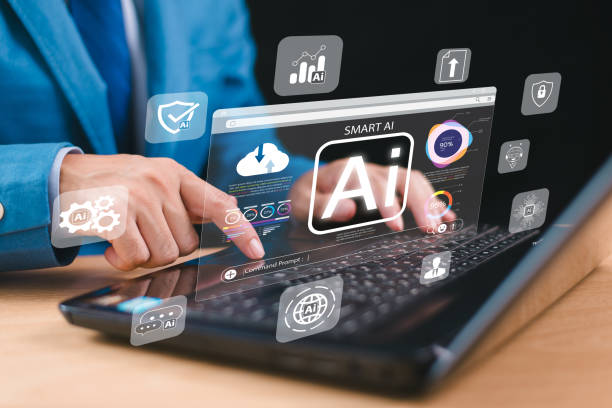
Content Optimization; Quality, Relevance, and Keywords
Content is king! This famous phrase in the world of SEO well illustrates the importance of content optimization.
High-quality, relevant, and engaging content not only attracts users but also helps improve your site’s ranking in search engines.
To optimize content, you need to pay attention to a few key points.
Firstly, your content should be #unique and original.
Avoid copying other people’s content and try to produce content that is valuable and useful.
Secondly, your content should be relevant to users’ needs and questions.
Before writing content, do some research and see what information users are looking for, and try to answer their questions.
Thirdly, your content should be readable and understandable.
Use short paragraphs, headings and subheadings, and images and videos to improve content readability.
Using relevant keywords in your content is also very important, but avoid overusing keywords.
Try to place keywords naturally in your text and avoid filling the text with keywords.
Also, pay attention to the length of your content.
Longer content usually ranks better in search engines, but make sure that your content remains engaging and informative.
By following these tips, you can produce content that is attractive to both users and search engines.
Do not forget that the main goal of on-page SEO (on-page SEO) is to provide the best user experience.
Image Optimization; File Name, Alt Text, and Image Size
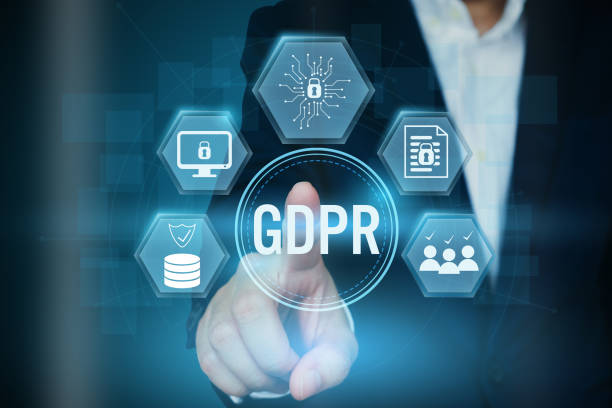
Image Optimization; File Name, Alt Text, and Image Size
Images play an important role in the attractiveness and better understanding of web page content.
But unoptimized images can slow down site loading speed and affect user experience.
To optimize images for SEO, you should pay attention to a few points.
Firstly, the file name of the images should be relevant to the content of the image.
Avoid using generic names like image1.jpg and use descriptive names like red-flower.jpg.
Secondly, the alt text of the images should be accurate and informative.
Alt text is displayed if the image fails to load and helps search engines understand the topic of the image.
Thirdly, the size of the images should be optimized.
High-size images can slow down site loading speed.
Use image compression tools to reduce image size without losing quality.
Also, use appropriate formats for images.
JPEG format is suitable for images with a lot of detail, and PNG format is suitable for images with a transparent background.
By optimizing images, you can increase your site’s loading speed, improve user experience, and improve your site’s ranking in search engines.
Optimized images not only help on-page SEO (on-page SEO) but also help users to better understand and enjoy your content.
Image optimization is one of the most important aspects of on-page SEO that should not be overlooked.
Website Speed Optimization; Effective Factors and Solutions

Website Speed Optimization; Effective Factors and Solutions
Website speed is one of the most important factors in SEO and user experience.
Users expect web pages to load quickly, and delays in loading can lead to site abandonment and reduced conversion rates.
Google also considers website speed as one of the ranking factors.
To optimize website speed, you need to pay attention to various factors.
Firstly, use quality hosting.
Inappropriate hosting can significantly slow down website speed.
Secondly, use a CDN (Content Delivery Network).
A CDN stores your website’s content on different servers around the world and selects the nearest server to the user to load the content.
Thirdly, optimize your images (as explained in the previous chapter).
Fourthly, use cache plugins.
Cache plugins store a version of your website’s pages and show this version to users instead of loading the page from scratch each time.
Fifthly, optimize your website’s code.
Extra and unnecessary code can slow down website speed.
By following these tips, you can significantly increase your website’s speed and improve user experience.
High website speed not only helps on-page SEO (on-page SEO) but also helps increase sales and improve conversion rates.
The following is a table of information related to improving website speed:
| Effective Factor | Solutions |
|---|---|
| Hosting | Choosing quality and appropriate hosting |
| CDN | Using a Content Delivery Network (CDN) |
| Image Optimization | Reducing image size without losing quality, using the appropriate format |
| Cache Plugins | Activating and configuring cache plugins |
| Code Optimization | Removing extra and unnecessary code, compressing code |
Internal Linking; Creating a Coherent Structure and Guiding Users
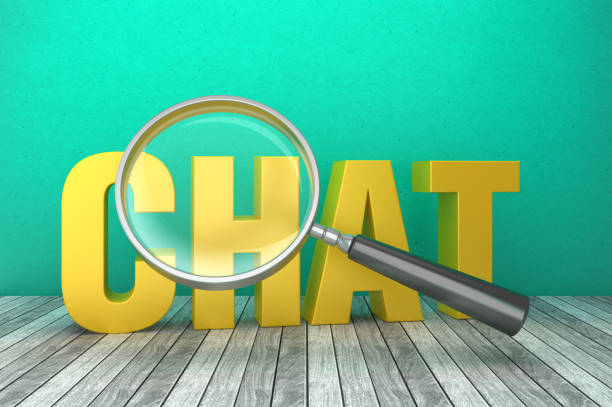
Internal Linking; Creating a Coherent Structure and Guiding Users
Internal linking refers to the process of creating links between different pages of your website.
Internal linking not only helps users to easily navigate your site but also helps search engines to better understand your site’s structure and identify more important pages.
For effective internal linking, you need to pay attention to a few points.
Firstly, the links should be relevant to the page’s content.
Linking from a page about SEO to a page about website design is not logical.
Secondly, use appropriate link text.
Link text should be descriptive and informative and tell users what page they will be taken to by clicking on the link.
Thirdly, place links naturally in your text and avoid overdoing the linking.
Internal linking helps to improve on-page SEO (on-page SEO) and makes users stay on your site longer and increases the likelihood of their return.
With appropriate internal linking, you can help search engines identify more important pages of your site and improve their ranking in search results.
Internal linking is an important SEO strategy that you should pay special attention to.
Dissatisfied with the low conversion rate of visitors to customers on your online store?
Solve this problem once and for all with professional online store design by Rasaweb!
✅ Increase visitor to customer conversion rate
✅ Create an excellent user experience and build customer trust
⚡ Get a free consultation
Responsive Optimization; Correct Display on Different Devices
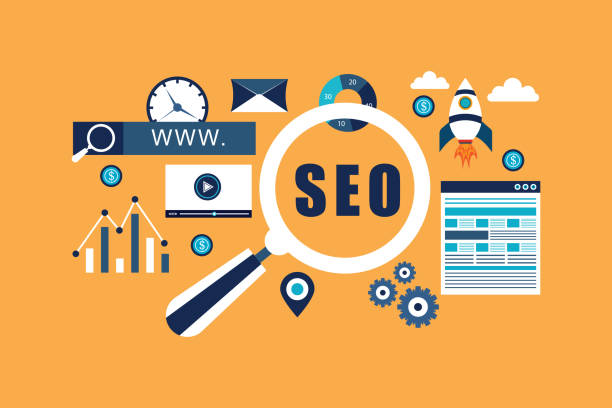
Responsive Optimization; Correct Display on Different Devices
With the increasing use of mobile devices to access the internet, responsive optimization (Responsive Design) has become more important.
Responsive means that your website should be displayed correctly on different devices such as computers, tablets, and mobile phones.
A responsive website automatically adjusts to the screen size of the user’s device and provides a better user experience.
Google also prefers responsive websites and ranks them better in search results.
To optimize for responsiveness, you should use flexible design and use media queries to adjust the display of site elements on different devices.
Also, you should make sure that your images and videos are also responsive and displayed correctly on different devices.
By optimizing for responsiveness, you can improve user experience, reduce bounce rate, and improve your site’s ranking in search engines.
Responsive optimization is one of the most important aspects of on-page SEO that should not be overlooked.
On-page SEO (on-page SEO) ensures that your website is accessible and usable for all users.
Continuous Review and Improvement; The Key to Success in On-Page SEO

Continuous Review and Improvement; The Key to Success in On-Page SEO
On-page SEO is a continuous process and requires continuous review and improvement.
After performing initial on-page SEO actions, you should regularly review your site’s performance and identify its strengths and weaknesses.
You can use various tools such as Google Analytics and Google Search Console for this.
These tools help you monitor your site’s traffic, identify the keywords that users are using to reach your site, and find technical problems with your site.
Based on the information you obtain from these tools, you can improve your SEO strategy and fix your site’s weaknesses.
You should also pay attention to changes in search engine algorithms and update your SEO strategy based on these changes.
On-page SEO (on-page SEO) is a long-term investment and requires patience.
With continuous review and improvement, you can increase your site’s ranking in search engines and attract more organic traffic to your site.
Success in SEO requires continuous effort and staying up-to-date with the latest changes.
Frequently Asked Questions
| Question | Answer |
|---|---|
| What is On-page SEO? | On-page SEO refers to a set of actions that are performed within your website to improve its ranking in search engine results. This includes optimizing content, site structure, and HTML code. |
| Why is on-page SEO important? | On-page SEO helps search engines understand the content of your page and determine whether your content is relevant to searchers or not. It is the foundation of any successful SEO strategy. |
| What are the key elements of on-page SEO? | Page Title (Title Tag), Meta Description, Use of Keywords, Image Optimization, Heading Structure (H1, H2, …), Internal Linking, and Content Quality are key elements. |
| How to optimize the page title (Title Tag)? | The page title should include the main keyword, be attractive and encouraging to click, and its length should be between 50 and 60 characters (or suitable pixels) so that it is fully displayed in search results. |
| What role does the Meta Description play in on-page SEO? | The meta description is a summary of the page’s content that is displayed below the title in the search results. Although it does not directly affect ranking, it helps SEO by increasing the click-through rate (CTR). |
| What is the importance of using the heading structure (H1, H2, H3) in on-page SEO? | Headings structure the content of the page and make it easier to read. H1 is usually the main title of the page and should include the keyword. H2 and H3 are used to organize subsections and help search engines understand the hierarchy of content. |
| How to use keywords effectively in content? | Keywords should be used naturally and logically throughout the content, including the introduction, body, and conclusion. Avoid over-filling keywords (Keyword Stuffing). |
| What steps are involved in optimizing images for on-page SEO? | It includes compressing images to reduce size, using descriptive file names, adding appropriate alt text, and optimizing the image title and description. Alt Text is critical for accessibility and helping search engines understand the content of the image. |
| What is Internal Linking and what are its benefits? | Internal linking means creating links from one page on your website to another page on the same website. This helps users to easily navigate your site, distributes page credibility across the site, and helps search engines better understand your site structure. |
| What is the importance of content quality in on-page SEO? | High-quality, accurate, comprehensive, and valuable content for users is the cornerstone of on-page SEO. Search engines prefer content that meets users’ needs. Quality content leads to longer dwell time and lower bounce rate, which are positive SEO signals. |
And other services of Rasa Web advertising agency in the field of advertising
Intelligent conversion rate optimization: Transform user interaction with accurate audience targeting.
Intelligent reportage: A new service to increase customer attraction through dedicated programming.
Intelligent Marketplace: A professional solution for digital branding with a focus on intelligent data analysis.
Intelligent Data Analysis: A professional solution to increase sales with a focus on customizing the user experience.
Intelligent UI/UX: A professional solution to increase click-through rates with a focus on SEO-based content strategy.
And over hundreds of other services in the field of internet advertising, advertising consulting, and organizational solutions
Internet Advertising | Advertising Strategy | Advertising Reportage
Resources
On-Page SEO Optimization: A Comprehensive Guide
,On-Page SEO: The Complete Guide to Ranking Higher
,On-Page SEO: A Practical Guide
,The On-Page SEO Guide: Techniques and Best Practices
? To shine in the online space, you need a reliable partner. Rasaweb Afrin, a leading digital marketing agency, paves the way for your digital success by providing comprehensive services including SEO, smart advertising, and personal website design. Contact us today and transform the future of your business!
📍 Tehran, Mirdamad Street, next to the Central Bank, South Kazerun Alley, Ramin Alley No. 6


